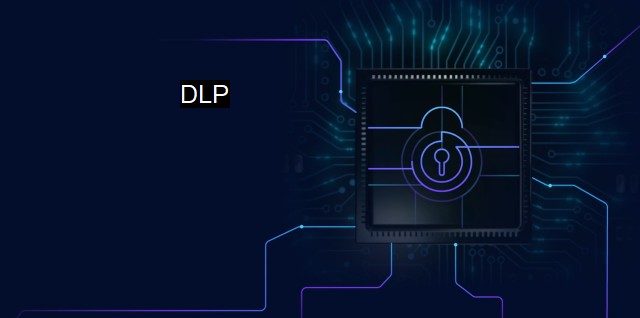What is DLP?
The Importance of Data Loss Prevention (DLP): Defending Against Cybersecurity Attacks and Breaches
Data Loss Prevention (DLP) refers to a set of tools and processes designed to ensure that sensitive data is not lost, misused, or accessed by unauthorized users. DLP activities range from identifying, monitoring, and protecting data in motion (network traffic), at rest (data storage), in use (endpoint actions) to even ensuring the safety of data in cloud systems. The scope of DLP now covers both from digital data residing on organizational infrastructure to end-user actions. As companies continue to rely more heavily on digitized information, DLP has evolved into a critical component for Internet security management systems.DLP is a sophisticated tool engineered to ensure that the internal control system is robust. Identity theft, data breach, or any cybercrime-related to the compromise to sensitive organizational data can cause unprecedented damage to an entity, from financial loss to reputational damage and regulatory issues.
DLP applies complex methods for data recognition that vary according to different frameworks. Some may function through exact data matching, others use statistical methods, machine learning techniques, or advanced fingerprinting technologies. The software categorizes portions of data that it detects as sensitive (e.g., Social Security numbers, financial information, confidential client details), then applies the organization's predefined policy to protect it from unwanted exposure.
While antivirus software is designed to detect cyber threats and malware, DLP goes a step further to protect data. One primary distinguishing factor lies in elevating security protocols according to the risk attached to the various data stakeholders. Therefore, DLP can avert accidental data loss instances that occur due to human error, along with fortifying against sophisticated attacks that traditional antivirus software might overlook.
In real-world applications of DLP, companies get granular control regarding who can access data, where it can be shared, and how it is used. It also has the capability to automatically encrypt sensitive data, or even block its execution, as well as monitor outgoing communications—raising notifications when an anomaly is detected.
Another groundbreaking attribute of DLP technology is that it can facilitate the compliance of various regulatory mandates pertaining to data privacy laws, such as the GDPR in Europe or HIPAA in the United States. In fact, some DLP solutions specifically target sectors dealing with abundantly sensitive data, such as the healthcare sector, financial services, and legal industry. Companies operating in these sectors can undoubtedly benefit by demonstrating robust data handling practices through DLP tools, thereby minimizing the possibility of hefty non-compliance penalties. through successful breach prevention, these tools can also preserve customer's trust and brand value.
The integration of machine learning and AI technology with DLP solutions promises innovative advances. Adaptive DLP systems can dynamically adjust according to user behavior and data movement, providing customized security mechanisms without manual intervention. DLP measures combined with the predictive analytics of cybersecurity ensure rigorous defense against existing and upcoming threat dynamics at every data-at-rest or data-in-transit point.
No security measure is infallible, but a well-implemented DLP strategy can protect against most common threats while warning of potential vulnerabilities. Organizations ensure a marked improvement in their avoidance and mitigation of cyber threats through a proactive approach to implementing DLP systems. Hence, in today's vulnerable digital space, DLP solutions have become indispensable technological tools for businesses.
Given the escalating threat of cyber-attacks and data infringements, institutions cannot afford to neglect the essentiality of implementing Data Loss Prevention mechanisms as part of their cybersecurity strategy. To counter complex threats and security breaches successfully, response teams need to extend their tools and protocols beyond traditional antivirus defenses. The adoption of DLP tools, along with good practices like regularly updating security protocols, training personnel on cybersecurity hygiene, can fortify organizations' defense systems successfully in the long run.

DLP FAQs
What is DLP in cybersecurity?
Data Loss Prevention (DLP) is a cybersecurity strategy that involves identifying, monitoring, and protecting sensitive information from unauthorized access, modification, or theft.What are the benefits of using DLP software?
DLP software can prevent data breaches and protect sensitive information from being accessed or stolen. It can also help organizations comply with regulations and avoid legal liabilities. Additionally, DLP can help improve data management and increase employee awareness about cybersecurity.How does DLP differ from antivirus software?
While antivirus software is designed to detect and remove malware and viruses, DLP focuses on protecting sensitive data from being lost or stolen. DLP works by monitoring and controlling the flow of data within an organization, while antivirus software scans for threats and infections in files and software.What are some common DLP techniques?
Some common DLP techniques include content inspection, data classification, access control, encryption, and activity monitoring. Content inspection involves scanning data for specific keywords, patterns, or data structures that indicate sensitive information. Data classification involves categorizing data based on its sensitivity level. Access control involves restricting access to sensitive data only to authorized users. Encryption involves converting sensitive data into unreadable code to prevent unauthorized access. Activity monitoring involves tracking user activity to identify suspicious or unauthorized behavior.Related Topics
Data loss prevention Data classification Endpoint protection Data encryption File Integrity Monitoring
| | A | | | B | | | C | | | D | | | E | | | F | | | G | | | H | | | I | | | J | | | K | | | L | | | M | |
| | N | | | O | | | P | | | Q | | | R | | | S | | | T | | | U | | | V | | | W | | | X | | | Y | | | Z | |
| | 1 | | | 2 | | | 3 | | | 4 | | | 7 | | | 8 | | |||||||